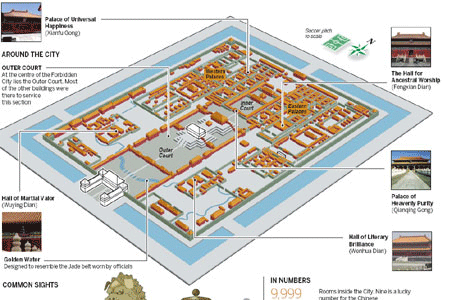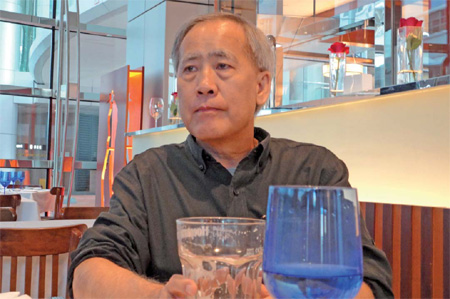Bridging the divide
Updated: 2011-09-09 08:37
By Alexis Hooi (China Daily)
|
Sociologist Chan Kwok-bun doesn't believe that Hong Kong and Shenzhen are interdependent at present. Alexis Hooi / China Daily |
Neighboring cities need to address differences that transcend mere profit if they want to grow together, sociologist says
For Hong Kong-based sociologist Chan Kwok-bun, the idea of a growing interdependence between his city and its mainland neighbor Shenzhen is "an exaggeration".
"I certainly don't think that word is a good description of the present situation between the two cities and I'm not sure it will be in the future. Interdependence needs to rest on a certain threshold of equality, a certain kind of parity and trust between the two. The idea of mutuality and reciprocity It has to be based on fundamental cultural assumptions, that both sides trust each other. Profit, of course, is important but it is not the begin all and end all."
Chan is the first chair professor of sociology at Hong Kong Baptist University as well as the chairman and founder of the Chan Institute of Social Studies. He has close to 40 books to his name and is working on 16 more, with many focusing on the evolving Chinese community in and outside the mainland.
That is also an area that reflects the differences and gaps between Shenzhen, one of the richest cities on the mainland, and the commercial hub of Hong Kong that it borders in southern China, Chan says.
Hong Kong entrepreneurs and businesses helped spearhead investment in the Pearl River Delta, an economic powerhouse of the country fueled by low-cost manufacturing, in the past 30 years.
Shenzhen, as a special economic zone in the country's reform and opening-up since the late 1970s, has been acting as a channel for that growth.
Many Hong Kong residents continue to work in Shenzhen because of the increasingly important business links between the two sides but Chan says that is also a reason for a worrying divide, where families can be split between the two cities.
Vivien Chan Wai-wan, the director and senior researcher of the Chan Institute of Social Studies, cites the personal example of her brother whose family is in Hong Kong but works in Shenzhen. Up to 300,000 people from Hong Kong can be working long term across the border, she says.
"There can be many differences between the families in Shenzhen and those in Hong Kong. Many families in Hong Kong can also have one member working on the mainland, in the past it used to be mostly men but now more women are also doing so," she says.
"Many men from Hong Kong who work in Shenzhen also leave behind their children who grow up without them. There are more and more of such 'absent' fathers and mothers, relying instead on maids to play out their roles. These costs are increasing and some can never be compensated."
"Hong Kong people who work across the border might return to their families often during the initial part of their work, but the frequency reduces as time goes by. The transportation network might get better and it might become easier to travel between the two cities, but the distance is still physical and real," she says.
"We call it 'compartmentalization', where a person, a body moves from city A to city B, and makes sure that he doesn't talk about city A and vice versa. That's schizophrenia and the antithesis to integration, not to mention interdependence," Chan Kwok-bun says.
"It's two solitudes, two very different cultural ethos. Partly because the whole thing is driven by profit and by economics," he says.
"I argue that the only reason why Vivien's brother is in Shenzhen is because of economics, nothing else. If he can have similar working conditions in Hong Kong, he would come back. The problem is also the split family. The man is in Shenzhen and he is not going to tell his wife and his children whatever happens there. Nothing about his emotional life, I'm sure. And wife and children also learn never to ask what is happening on the other side. It is a total separation."
Still, Professor Chan, who has also been involved in research and reports for government policy, says there are many opportunities for Hong Kong and Shenzhen to work together to solve these challenges.
"We want to foster a relationship of interdependence and mutuality and reciprocity, so that the two cities, being so physically adjacent to each other, begin to identify problems that are not specific to any one side, but to both. To think about gains and losses that are reciprocal and then create those structures for cross-border dialogue," he says.
"What I'm thinking about and interested in is the kind of cooperation between the intellectual elite on both sides. For example, we know that they are setting up an autonomous university in Shenzhen. I also know a university in Hong Kong would also be interested to either going over the border to set up institutes of research and learning, or to use the common area on both sides of the Shenzhen river, like a buffer zone, where both sides enter to set up joint institutes of research and learning. That would be a very good structure, to the extent where social scientists on both sides can sit together to identify the problems that are common to both and solve them jointly."
The idea, Chan says, is to use the social sciences to come up with policy that would be mutually agreeable to both sides.
"Pollution, for example, is not exclusive to Hong Kong. So it is this kind of inter-city cooperation in the best interest of all that I want to see happening."
(China Daily 09/09/2011 page6)
E-paper

Unveiling hidden treasures
The Forbidden City, after the Great Wall, is the most recognized tourist site in China.
Mountains to climb
Short and sweet
Game for growth
Specials

China at her fingertips
Veteran US-China relations expert says bilateral ties have withstood the test of time

The myth buster
An outsider's look at china's leaders is updated and expanded

China in vogue
How Country captured the fascination of the world's most powerful fashion player

